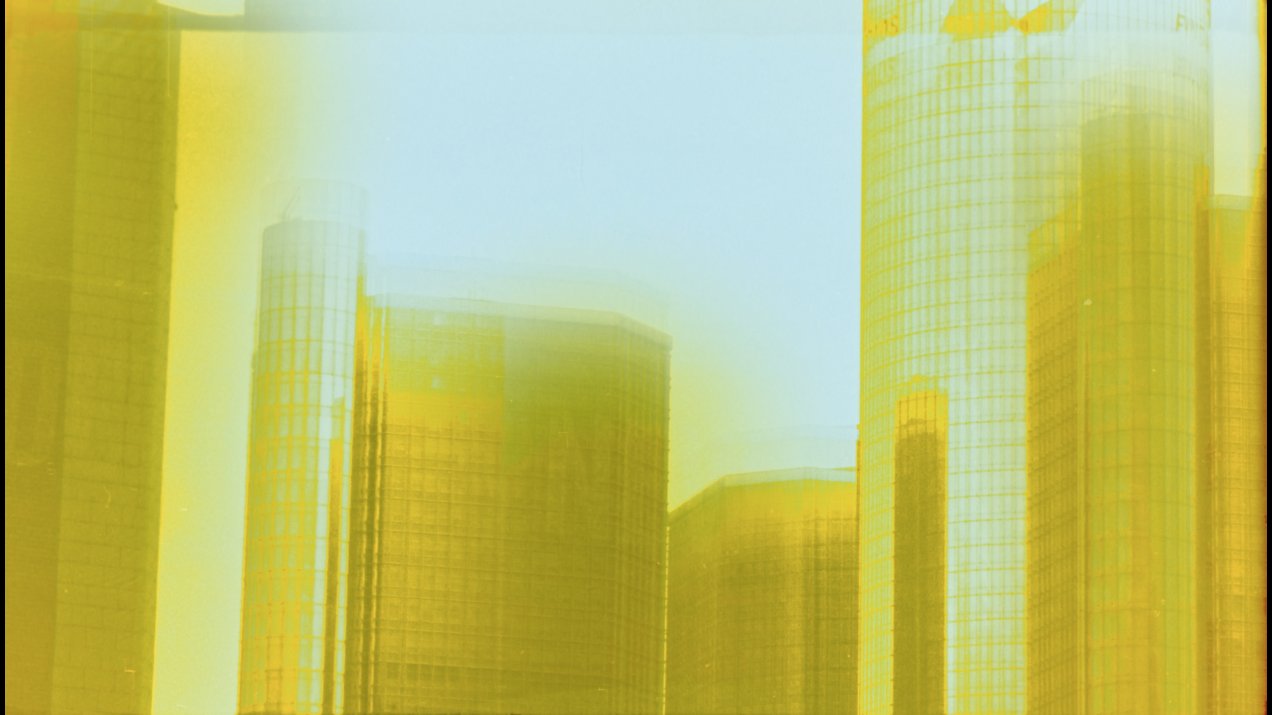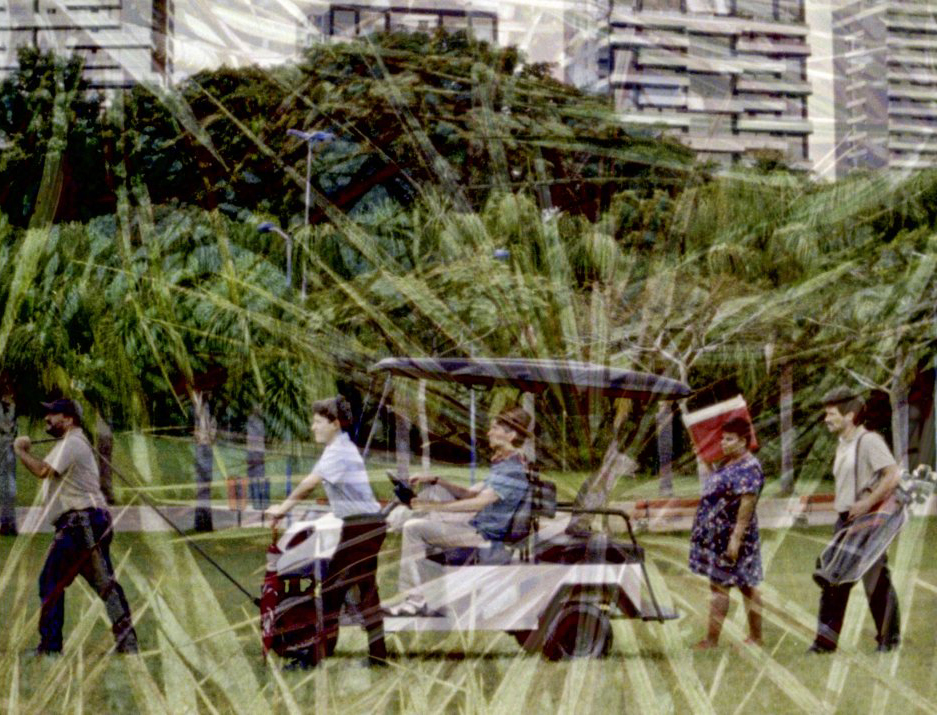45th Parallel focuses on border buildings. First is the Haskell Free Library and Opera House that straddles the U.S./ Canadian border with a thick black line. Built in 1904 as a symbol of unity, it was used by a gun smuggler who hid his wares in the bathroom, much like the scene in the Godfather where Michael Corleone unwraps a gun attached to a toilet to avoid being frisked on his way in. Another example is a building in Mexico where an U.S. Border Patrol agent shot an unarmed teenager from the American side, but the death took place on Mexican space. Did the bullet have Constitutional rights? Could the officer be tried in Mexico? This has implications for a drone operator in Nevada mistakenly targeting the wrong site in Afghanistan, mistaking a wedding procession for the Taliban, a remote murder, could he be tried?

Still from The Newest Olds
Similarly, The Newest Olds is about the U.S./Canadian border between Detroit, Michigan and Windsor, Ontario. New glass high-rises contrast with a sign that says “Detroit Newest Olds” near the Farwell Buildings exist in a kaleidoscopic landscape between two countries.
The Iranian film No Bears written, directed, and starring Jafar Panahi is about a film director who temporarily locates to a dusty, hilly village on the border with Turkey, where he is directing a film shot on the other side via Zoom. Although he could have stayed in Tehran (where his internet access would be better), he wants to be geographically close by. The earthen cottage where he lives in this small town is spartan, simple but comfortable enough, and he films and photographs the village in his spare time. The film was shot secretly in Iran, and subsequently Panahi was arrested, protesting the arrest of two filmmakers. The film was awarded a Special Jury Prize at the Venice Film Festival.

Still from Urban Solutions
Urban Solutions begins with a German in Brazil, who ruminates on the country’s lush floral beatify and orderly architecture while apartment doormen reflect on their routines as caretakers, security guards and confidants for the rich residents. Class inequalities are apparent, which hark back to colonialism—“the doorman is the new servant.” We see many gates of various colors and shapes that act as security barriers: “Security is the new gold. Absolutely crisis-proof.” The working class guards are relied on by the upper class, but there are rumblings afoot.
Return to Seoul chronicles the journey of a young Korean orphan, Freddie, who was brought up in France. She spontaneously returns to Korea and seeks out her biological family. Starting out in Seoul, she meets her father in his home city of Gunsan, a high-tech manufacturing city and international seaport located on the Yellow Sea. We get to see the country through Freddie’s eyes.
Anxiety pulses throughout Hong Kong in Devil’s Peak, a kaleidoscopic, fragmented journey through the city during its days of protest against the Chinese (lot of umbrellas during marches are discarded), surveillance and fires. Skyscrapers, construction sites, traffic and subways are shown in fast cuts, superimposed images, and montages. “What emerges is a dizzying portrait of a metropolis bustling with jagged contrasts: between the shiny objects of capitalist futurism and the past’s ghostly whispers, between gestures of resistance and forces of suppression.”
Films Mentioned
45th Parallel, directed by Lawrence Abu Hamdan
Devil’s Peak, directed by Simon Liu
The Newest Olds, directed by Pablo Mazzolo
No Bears, directed by Jafar Panahi
Return to Seoul, directed by Davy Chou
Urban solutions, directed by Arne Hector, Luciana Mateo, Minze Tummesjheit, and Vinicius Lopes
Previously, the architecture films, next up the Landscape, Design, and NY films.
